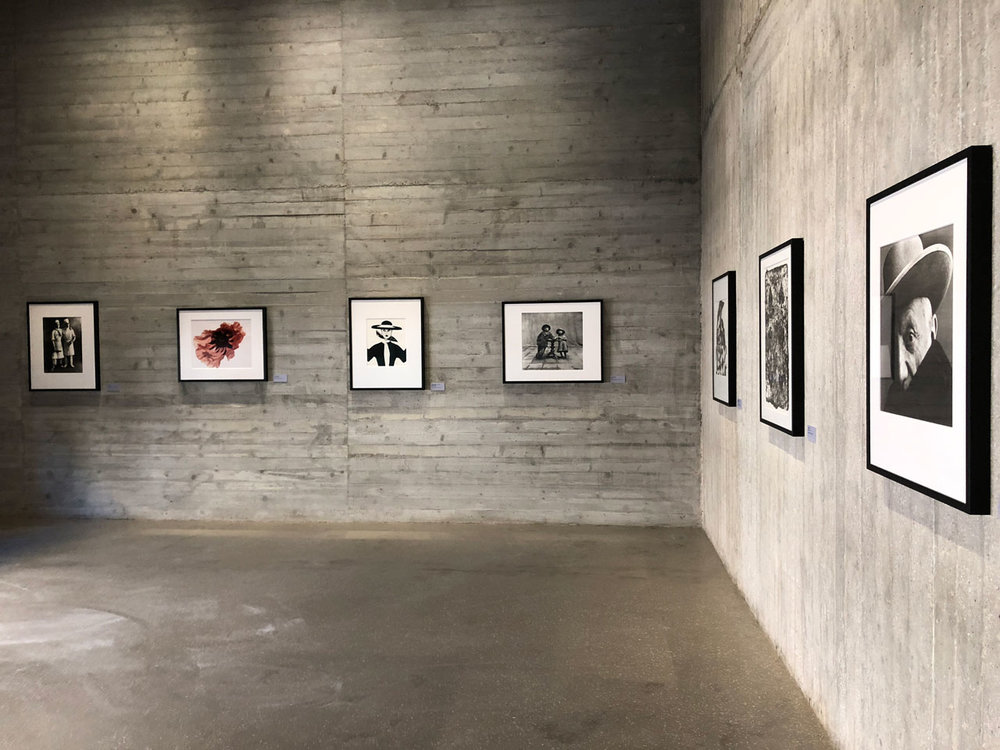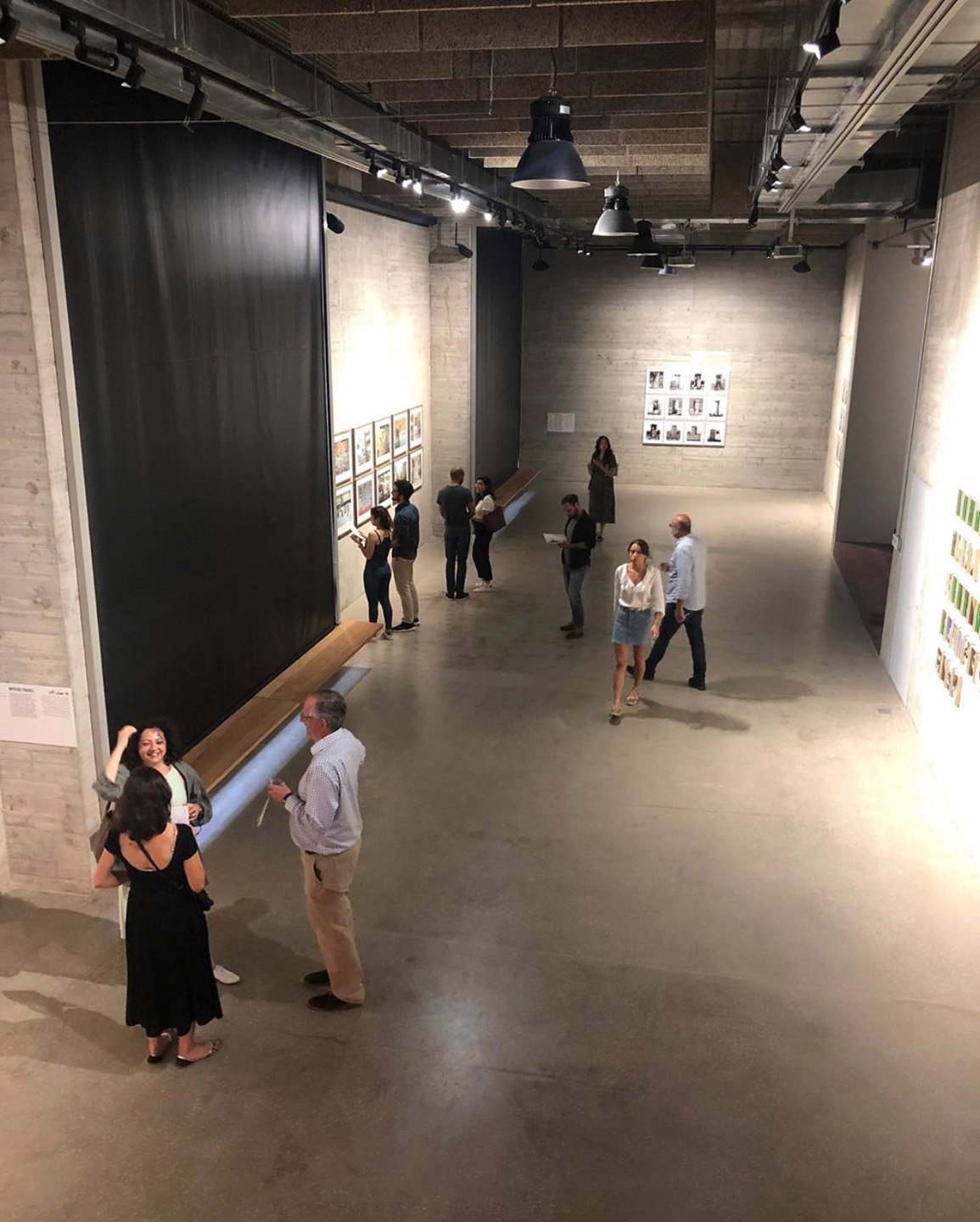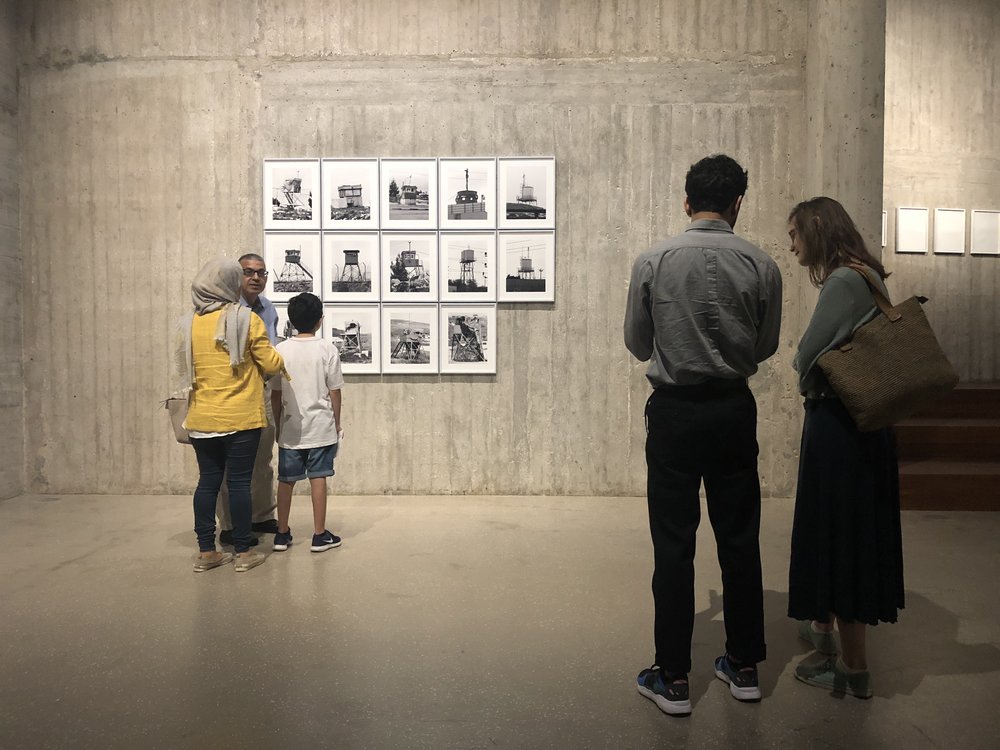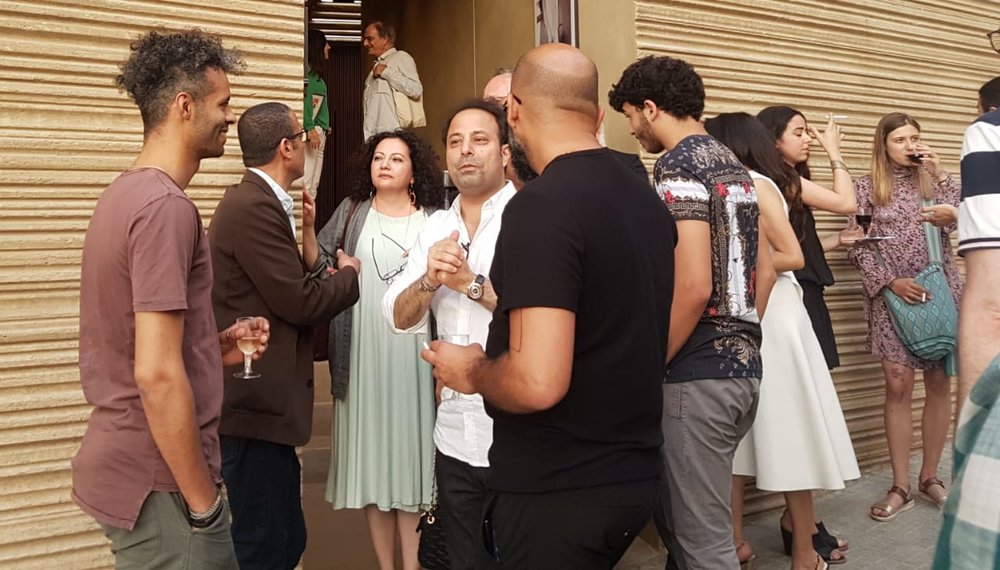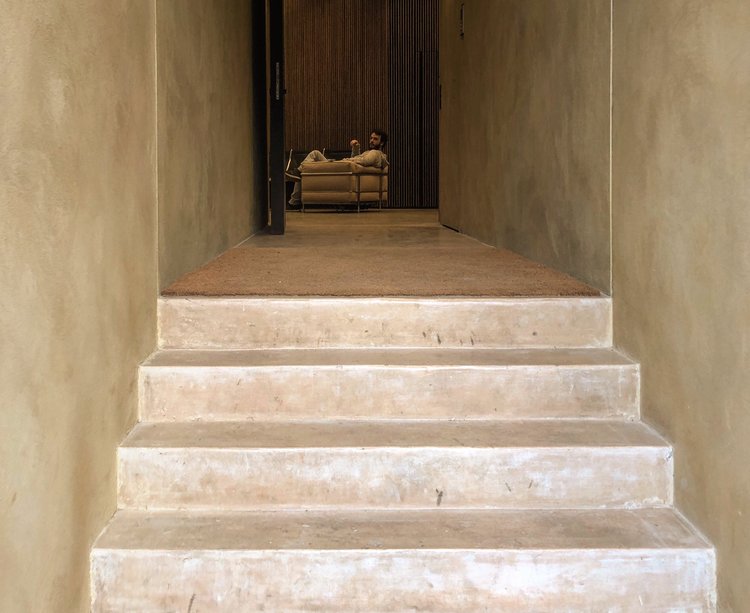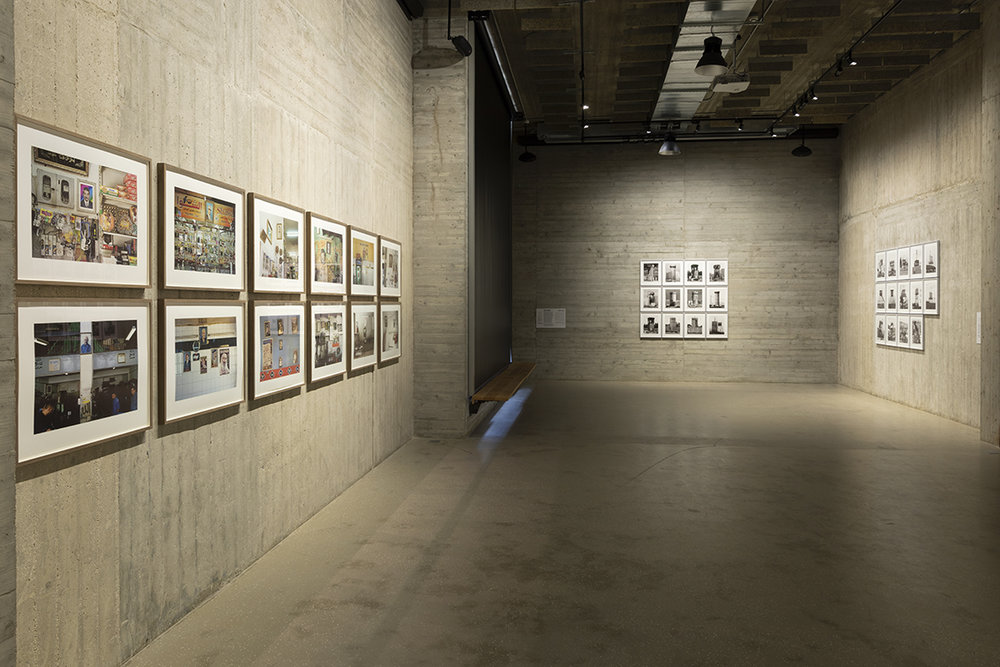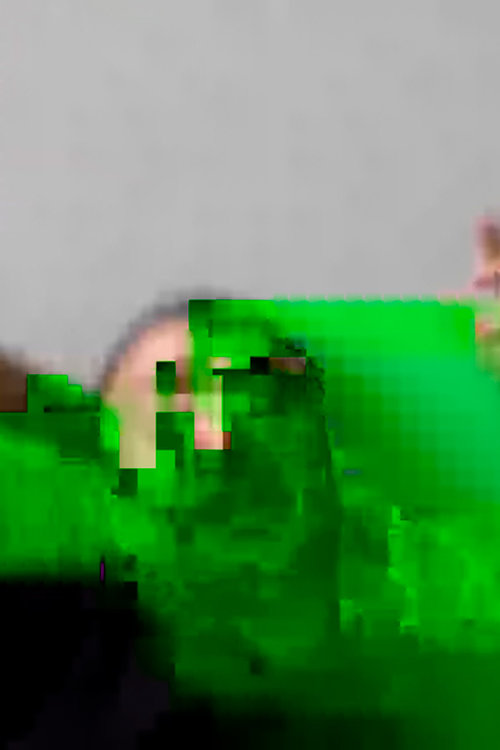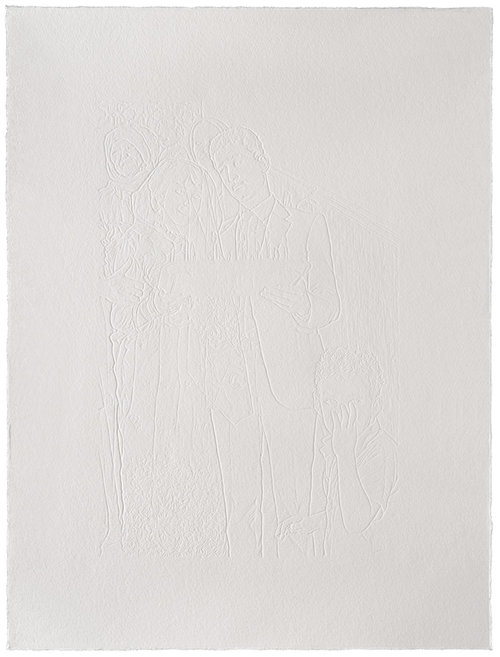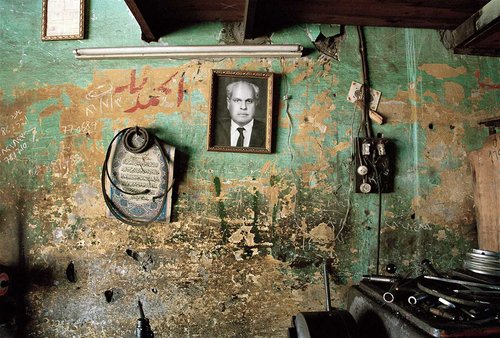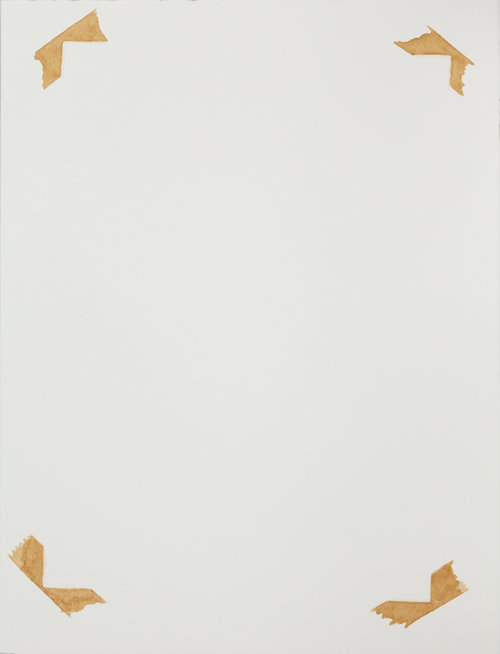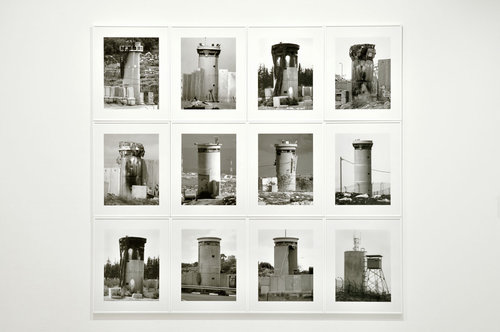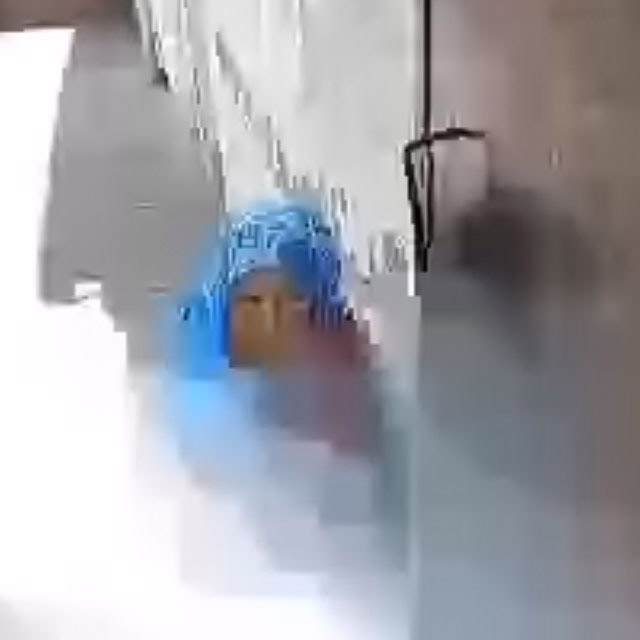
-
Perhaps, in their attempt to meet, people seek to forget.
Hanna Mina “Snow Comes Through The Window”
Unlike Hanna Mina, whose novel inspires the title of this exhibition, in his works, Taysir Batniji does not seek to forget, but to embody the concepts of void, absence and separation. His works are pivoted on the representation of absence and the possibility of the disappearance of its forms of representation.
Batniji lives in Paris, where he works with a land from which he cannot work. In his recent work, Disruptions, he takes screenshots of encrypted WhatsApp conversations with his family in Gaza. At times, he would see his mother and at others he witnesses her disappearance. The scrambled images, sometimes due to poor internet connection and at other times because of war, transpose us to a space where the public and private are intertwined.
In Fathers, Taysir took images of fathers, whose photographs hung prominently in public spaces around the city of Gaza. The images foreshadow spaces where those photographs appear in workshops and shops around town, a majority of which may have been inherited and handed down by those absent fathers.
The images are not much of a sociological work on fatherhood as much as a research work that deals with the relationship between the photograph and the duality of presence and absence, or the idea of the presence of absence. The Traceswith water colors collection then offers an interrogation of the aftermath of absence.
Batniji draws on the works of Bernd and Hilla Becher on water tanks, to offer a topographic document of the Israeli watchtowers spreading throughout the West Bank. In Watchtowers, Batniji sought to produce an optical illusion, where the viewers believe that they recognize what they are seeing, its content and its author. It is only on close inspection that one realizes that these images have nothing to do with Becher’s techniques. Here Batniji, invites his viewers to look closely on this turbulent presence as he transforms it into a record of disappearance, absence and separation.
In The Press
L’Orient Le Jour | Taysir Batniji, puissant et poignant témoignage d’une identité non identifiée
L’artiste palestinien revient sur trois volets qui sous-tendent cet événement, et plus globalement son œuvre depuis sa genèse…
The Daily Star | Presence, absence and Palestine
“Not being able to go to Palestine,” the France-based artist says, “you feel like this period of your life belongs to another time or another person.”
Al Modon | الرمل يأتي من النافذة» لتيسير البطنيجي: فراغ وغياب»
لا تسعى هذه المجموعة إلى تقديم تحليل سوسيولوجي أو ثقافي، فهي نتاج اهتمام شخصي بهذه الحالة (أو اللاحالة) من حضور الغياب أو غياب الحضور والحالة الموجودة بينهم
Al Akhbar | تيسير البطنيجي: غزة أول الكلمات وآخرها
“أكثر من ثلاثة عقود وهو ينبش في عالم يحاصره العنف وتحده حدود جغرافيا صنعها الإنسان. يقاوم النسيان بالذاكرة، لا الذاكرة الإلكترونية، بل تلك الحية النابضة، ويربط الماضي بالحاضر، ليس ذاك المشبع بالمآسي فقط، بل بالحياة اليومية في كل تمظهراتها.”
Al Araby | تيسير البطنيجي.. نافذة مفتوحة على الغياب
يواصل الفنان الفلسطيني تيسير البطنيجي (١٩٦٦) مقاربة مفاهيم وثيمات تتعلق بالذاكرة والهوية والاحتلال والمكوث في المكان والعبور منه وإليه، عبر تفكيكها وتحويلها إلى عناصر مجرّدة ومصغّرة في رؤية تعيد ربطها بأفكار وسرديات موازية ومنحها عمقًا ومعاني جديدة
Biography
Born in Gaza in 1966, Taysir Batniji studied art at Al-Najah University in Nablus, Palestine. In 1994, he was awarded a fellowship to study at the School of Fine Arts of Bourges in France. Since then, he has been dividing his time between France and Palestine. During this period spent between two countries and two cultures, Batniji has developed a multi-media practice, including drawing, installation, photography, video and performance…
Already involved in the Palestinian art scene since the nineties, he multiplied his participation, since 2002, in a number of exhibitions, biennials and residencies in Europe and across the world.
Taysir was awarded the Abraaj Group Art Prize in 2012 and became the recipient of the Immersion residency program, supported by Hermes Foundation, in alliance with Aperture Foundation in 2017. His works can be found in the collections of many prestigious institutions of which the Centre Pompidou and the FNAC in France, the V&A and The Imperial War Museum in London, the Queensland Art Gallery in Australia and Zayed National Museum in Abu Dhabi.
Taysir Batniji’s work is represented by Sfeir-Semler Gallery (Hamburg/Beirut).
Join Our Guided Tours Of Taysir Batniji “Sand Comes Through The Window”
- Thursdays: 12 am, 4 pm, 6 pm
- Saturdays: 11 am, 4pm, 5 pm
- The tour lasts for 40 minutes and costs $10 per person. Places are limited, reserve your spot by contacting us.


